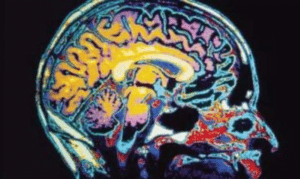
More than three million Americans are living with traumatic brain injury (TBI). This condition is linked to many physical, cognitive and emotional problems. It often has sexual side effects that are associated with marital instability, identity problems and low self-esteem.
Approximately 1.4 million individuals sustain a traumatic brain injury each year in the United States. TBI is also a major cause of death and disability worldwide, especially in children and young adults. Males sustain traumatic brain injuries more frequently than do females.
What Causes TBI?
Traumatic brain injury occurs when a sudden trauma, such as a blow or jolt to the head, causes damage to the brain. The main causes of TBI include falls, vehicle accidents, sports-related injuries and violence.
Brain injury can occur even when there is no direct blow to the head, such as when a person suffers whiplash. When the head is rapidly accelerated and decelerated, as in an automobile accident, twisting or rotational forces may stretch and even sever long-range connecting fibers in the brain.
Common Symptoms of TBI
The most common symptoms of TBI are collectively referred to as post-concussion syndrome (PCS). These include things such as dizziness, fatigue, headaches, visual disturbances, trouble sleeping, sensitivity to light and sound, and poor balance.
Cognitive difficulties are likely. These include things such as poor concentration, memory problems, poor judgment and impulsivity, slowed performance, and difficulty putting thoughts into words. Depression, anger outbursts, irritability, personality changes and anxiety are common. Many patients don’t develop symptoms until days or weeks after an accident.
Depending on the injury, treatment required may be minimal or may include interventions such as medications, emergency surgery or surgery years later. Physical therapy, speech therapy, recreation therapy, occupational therapy and vision therapy may be employed for rehabilitation.
How Serious is My Injury?
The severity of TBI can range from “mild” (characterized by relatively brief changes in mental status or consciousness following the injury) to “severe” (characterized by an extended period of unconsciousness or amnesia after the injury).
The length of time that a person is unconscious is one way to measure the severity of the injury. If you weren’t knocked out at all, or if you were unconscious for less than 30 minutes, your injury was most likely minor or mild. If you were knocked out for more than 30 minutes but less than six hours, your injuries were probably moderate.
Approximately 80 percent of TBI cases are classified as mild, with emergency room visits for mild TBI topping one million each year. Although this is a very high number of cases, there may even be more than that. We don’t know for sure because a number of cases go unreported or undetected.
Mild TBIs are especially difficult to diagnose because individuals typically do not show obvious physical signs of injury (for example, skull fracture), and rarely display evidence of brain damage on neuroimaging exams.
The term “mild” also may be misleading in reference to brain injury. Although someone may only be dazed or confused or have a brief loss of consciousness, evidence of impaired brain function is often clear. Cognitive changes, headaches, dizziness, and a number of other symptoms may be observed.
Outlook for Recovery
TBI symptoms may last a few days, weeks, months or even years. Outcomes can range from complete recovery to permanent disability and sometimes death. The majority TBI patients, however, recover completely in three to six months.